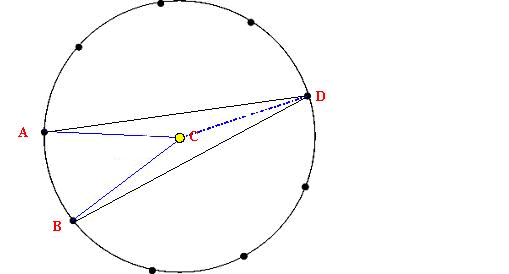Skip over navigation
If you are having difficulty with the interactivity, you may find this helpful:
Join all the points up to the centre and look for isosceles triangles.
You may find this diagram helpful to get you started.

It is useful to note that the blue lines are all radii of the circle, and as such, are all the same length. You may want to use some algebra to help explain your proof .


Or search by topic
Number and algebra
Geometry and measure
Probability and statistics
Working mathematically
Advanced mathematics
For younger learners
Subtended Angles
Age 11 to 14
Challenge Level 





- Problem
- Getting Started
- Student Solutions
- Teachers' Resources
If you are having difficulty with the interactivity, you may find this helpful:
* To create a rubber band for placing on your peg board, click on the colour of band that you would like to use, in the right-hand-side table.
* A new icon will appear on the screen. Drag this rubber band over to a peg on the board. Let go.
* You can now drag the rubber band to different pegs. To create another rubber band, repeat the above.
Join all the points up to the centre and look for isosceles triangles.
You may find this diagram helpful to get you started.

It is useful to note that the blue lines are all radii of the circle, and as such, are all the same length. You may want to use some algebra to help explain your proof .
You may also like
On Time
On a clock the three hands - the second, minute and hour hands - are on the same axis. How often in a 24 hour day will the second hand be parallel to either of the two other hands?
LOGO Challenge 1 - Star Square
Can you use LOGO to create this star pattern made from squares. Only basic LOGO knowledge needed.

